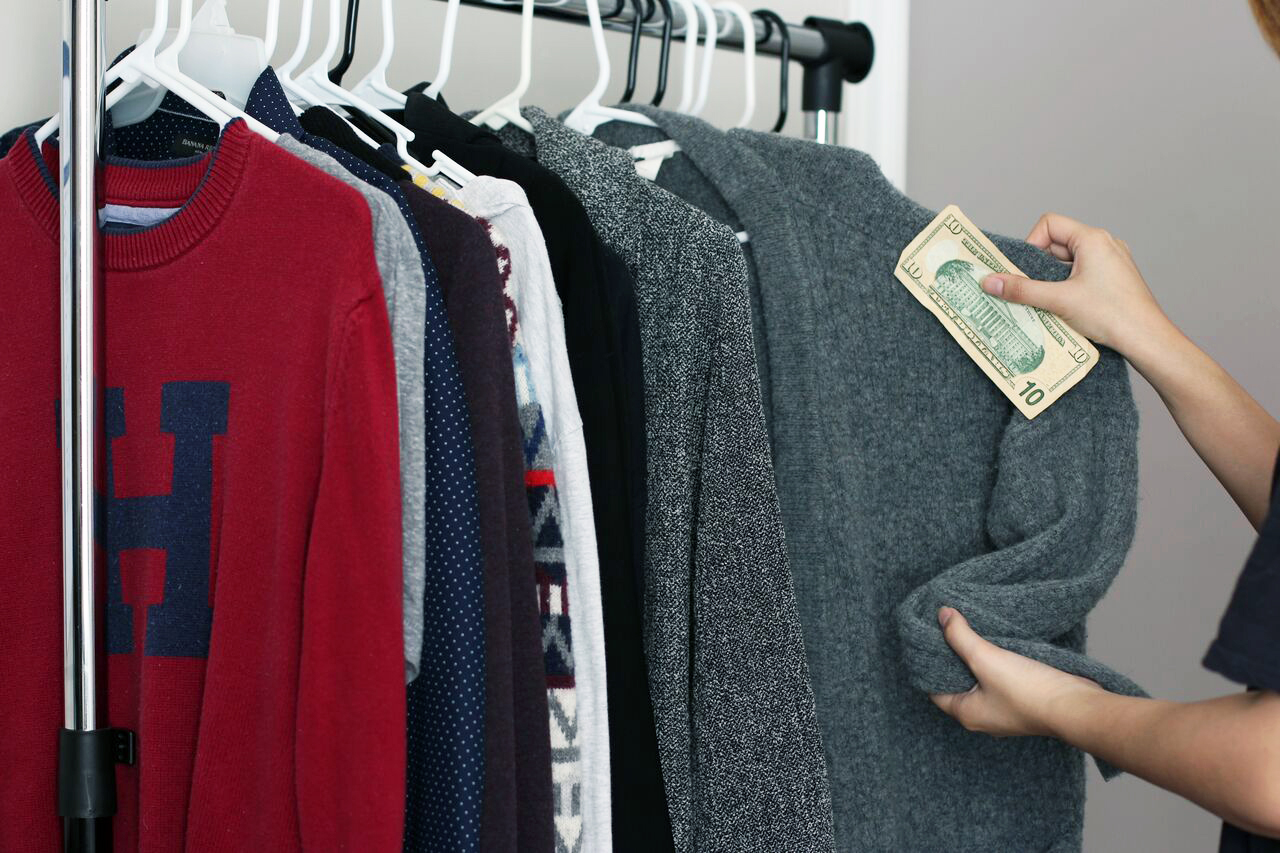
Look, we all want to serve looks and snatch wigs, but if you’re not careful, you could be serving up carbon emissions with a side of petrochemicals.
Buying new clothes is risky business, ecologically speaking. A cute “fast fashion” fit from Zara or H&M could produce waste in the form of textiles, pollution, and the oil involved in its transportation.
SECOND-HAND THRIFT
Buying second-hand clothes is a great way to avoid waste. Meg Schurmann is an economics major and thrift store connoisseur who made it her new year’s resolution to reduce her carbon impact as much as she could. Now, all of her shopping is done second-hand and wherever she goes, she brings her own eco-friendly bags.
Schurmann says thrift store selections can vary wildly, but jeans are a consistent go-to for her.
“The thing about buying jeans at a thrift store is you have to not think about size at all. You just have to grab jeans if you think they’re gonna fit, put them to your waist and try them on,” Schurmann said. “Finding your size is less important than finding your cut.”
VEGAN CLOTHING
Jon Peraza is a vegan student who also buys second hand clothes as often as possible. He said if you have to buy new clothes, research the impact of the materials you buy and the company they comes from. The production of animal products for clothing is something Peraza finds gross and exploitative.
“Those workers tend to be immigrants, people of color who are widely mistreated, working in brutal conditions where they’re desensitized to violence against animals,” Peraza said.
Ecological and ethical options do exist, but can be expensive. And even those that do claim to be ethical, if operating under the same globalized business model as their competitors, consume a glut of oil and can have questionable labour practices.
“Companies that claim to be vegan typically have slightly better benefits to workers,” Peraza said. “A lot of vegan clothes are still produced in sweatshops, etc. If you can not buy clothes, by any means, I encourage you to do that.”
INVESTMENT SHOPPING
Possibly one of the best options available to you is to buy items that last, thus preventing the waste of replacing it. Buying a quality coat worth mending or shoes with soles that can be restitched can not only save you money, but also reduce the waste you create globally as you circumvent consumption.
“Making clothes, transporting it, all of it, requires a massive amount of infrastructure and energy,” Peraza said. “Cotton needs to be harvested, watered, etc. So if you can make it last, that’s like one less shirt that has to be made.”
Schurman says mending clothes yourself is a great skill to learn. Buy a seam ripper, learn a hem stitch from YouTube, and those tools will get you through a lot of wear and tear.
“You can take out hems, you can put in a new hem and then a button. Learn how to sew on a couple different kinds of buttons,” Schurmann said.
